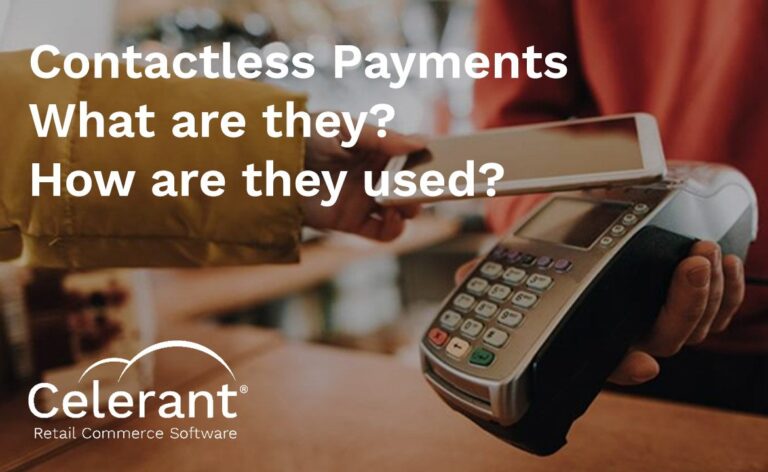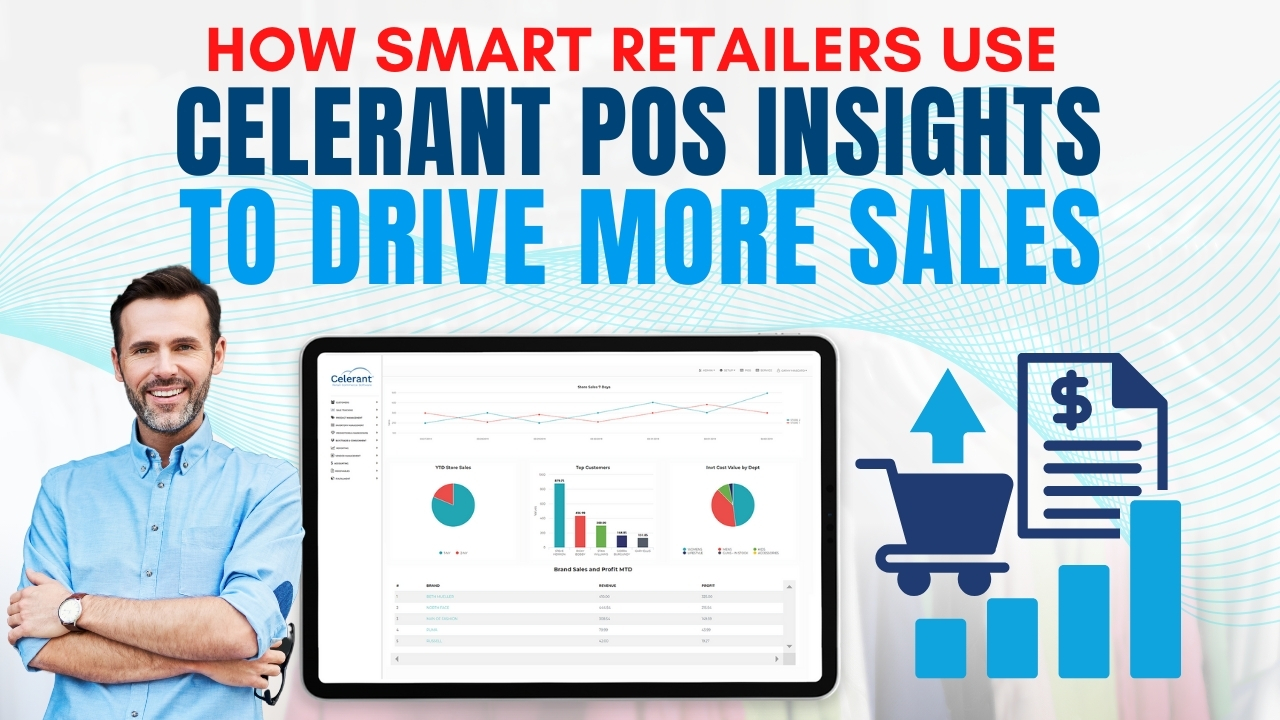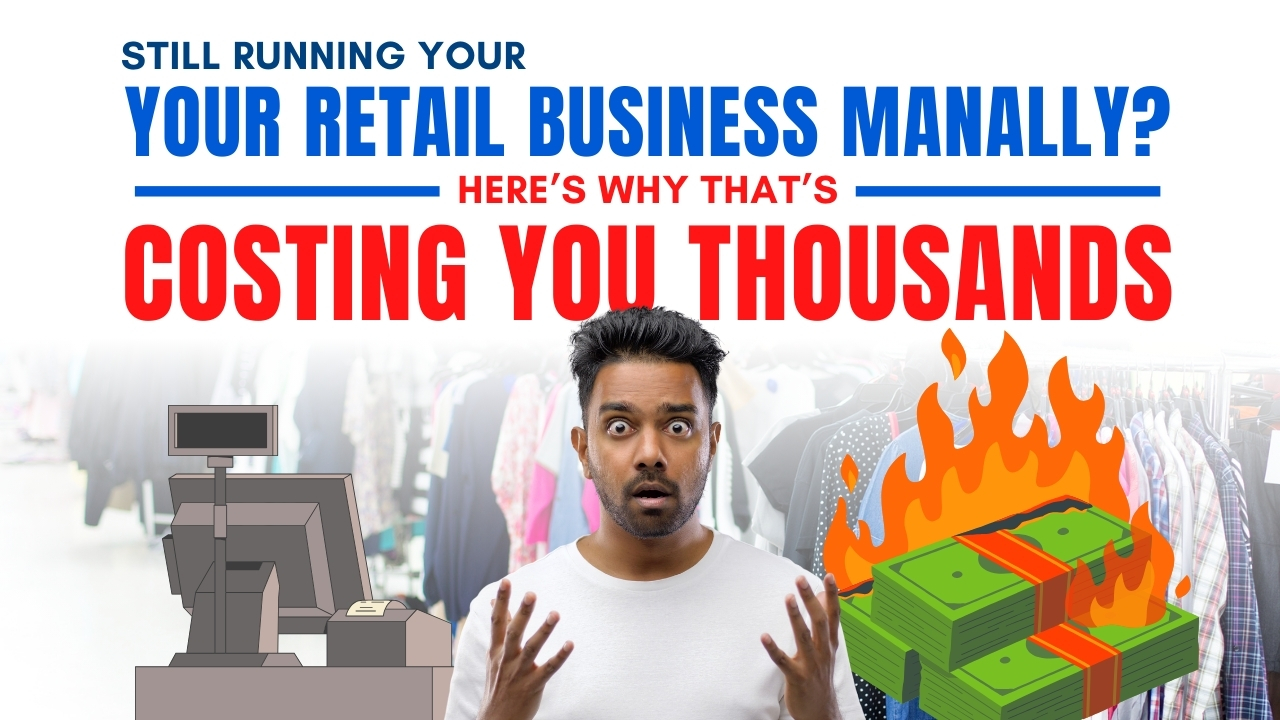Blog
What are Contactless Payments and How are They Used?
January 8, 2021 / 5 minute read / By Michele Salerno

Blog

This time last year, having a retail point of sale supporting contactless payments was a nice feature to have for a retail business, but frankly, it was not implemented by many retailers in the United States.
In 2021, the concept of contactless or touchless payments is quickly becoming expected from consumers, and retailers not offering this safer payment method will be falling behind in the market. So much has changed so suddenly, it can seem overwhelming for retailers.
So let’s first discuss the basics
First, let’s define a contactless payment. Old credit card processing systems required the credit cards to be swiped into the payment device, which often stalls the purchase and is outdated in terms in security. More common and expected payment technology is now EMV processing, which involves EMV chips which are dipped into the credit card processing device, as opposed to swiped. But now, the concept of touchless payments, does not even require the card to be dipped into the payment device- rather, there are two ways to support these contactless payments.
In both of these scenarios, the cashier is not touching the credit card or the consumer’s smart phone; and the costumer is not touching the credit card terminal. In fact, if they are using the smart wallet option, they are not even taking out their credit card. Either way, the sale is contactless; offering a safer approach to payments.
There are few different factors involved to determine if your retail business can support contactless payments. It is likely that you are already using some sort of point of sale system at your store. So first, you should confirm with your point of sale provider that they support this payment type. But it’s not only your point of sale provider that needs to support this, it is also your payment processing partner.
Typically, if your point of sale provider supports contactless payments, it is because the payment processing partners they work with also support it. These two will usually go hand-in-hand. If both your POS system and payment processing partner support contactless payments, then, next, it is important that you have the proper payment devices that also support this newer technology. Some point of sale systems and payment devices merely need upgrading, and others might need replacement. There are several different options for payment devices, and at different price points as well- but it’s vital that you confirm which of these devices your point of sale and your payment processor support, before you make any purchases.
Why the necessary move, now? During the pandemic, your customers naturally have become increasingly aware of the many things they touch every day. While many stores initially attempted to cover keypads, whether with professional systems or even plastic bags, customers quickly realized that every time they touch a keypad, it’s been touched by many other people before themselves. Some retailers have placed cups on the counter, one full of clean Q-tips and one for the used Q-tips, so that their customers can use the Q-tips to “safely” press the buttons on the payment devices without having to actually touch the devices. Same applies to pens, where retailers offer cups for clean and used pens for signatures, if the retailer isn’t using signature capture payment devices and is still having customers actually sign the credit cards slips with pens. Other retailers are taking the time in between each sales transaction to sanitize the devices, but this can take time and delay the point of sale process, causing even longer lines in our store, due to social distancing. But all of these approaches can look messy, take up additional counter space that you probably don’t have, and of course are not embracing the newer technology to accomplish the same goal in a much more streamlined approach.
Businesses are all eager to make sure that customers feel safe to shop in person during these complex times. This includes making sure lines are at appropriate distances, making sure both employees and customers are masked, and putting partitions between customers and sales people at the register. When retailers adapt the newer technology, and show their customers they are concerned about their safety, and the safety of their employees, it can leave a lasting impression- whether their customers chose to take advantage of it or not.
The United States historically tends to be reluctant to change the way business is done, so this sudden shift to contactless payments is unprecedented in US history. However, in Canada, already over 70% of payments under fifty dollars are paid for in this contactless fashion. Likewise, over 75% of transactions in the UK have been made the same way. For the US, this change seems sudden, but in reality, it has been a long term, tried and true process which has been tested in most of the Western World. The pandemic has created an environment in which this shift has become necessary, faster than usual and with a greater learning curve to businesses and customers than usual.
There are a few drawbacks involved with contactless payments, but no more than those with other styles of credit cards. RFID chips can be cloned, but this was a complication prior to using touchless payments. Whereas chips can also be scanned with the need of a passcode, causing a perceived extra layer of security, because of card skimmers at places like gas stations to steal passcodes, they are no more effective in preventing crime than cards enabled with RFID contactless payment. Although the media has made a large scale discussion of distance RFID scanners which can be used to “pickpocket” chips while walking through a crowd, those fears have not been realized. There are some small concerns about a lack of card authentication method. However, the speed of transactions and safety benefits to consumers override these smaller concerns.
There’s still a lot of change which needs to happen in the US for consumers to fully have the capability to use this technology. Only a third of US consumers already had a card going into the pandemic which had contactless technology. 21% had used their cards for contactless transactions previously, but that’s a large gap as more and more consumers are adopting such capabilities. However, the pandemic has spurred consumer activities to change. Whereas they were previously slow to adopt new methods, the recognition that contactless payments are possible, and already available to them through many of their bank cards, is spurring on new practices.
Now’s the time to evaluate your current technology. With recent changes to retail, Celerant continues to innovate and help it’s retail clients stay ahead of the curve with mobile point of sale, contactless payments, eCommerce, curbside pickup app and more.
 Looking for ways to stay ahead of the retail game? Learn how RaaS environments can help retailers grow.… |
 Manual retail processes are costing you sales, time, and money. Discover how a modern retail POS system… |